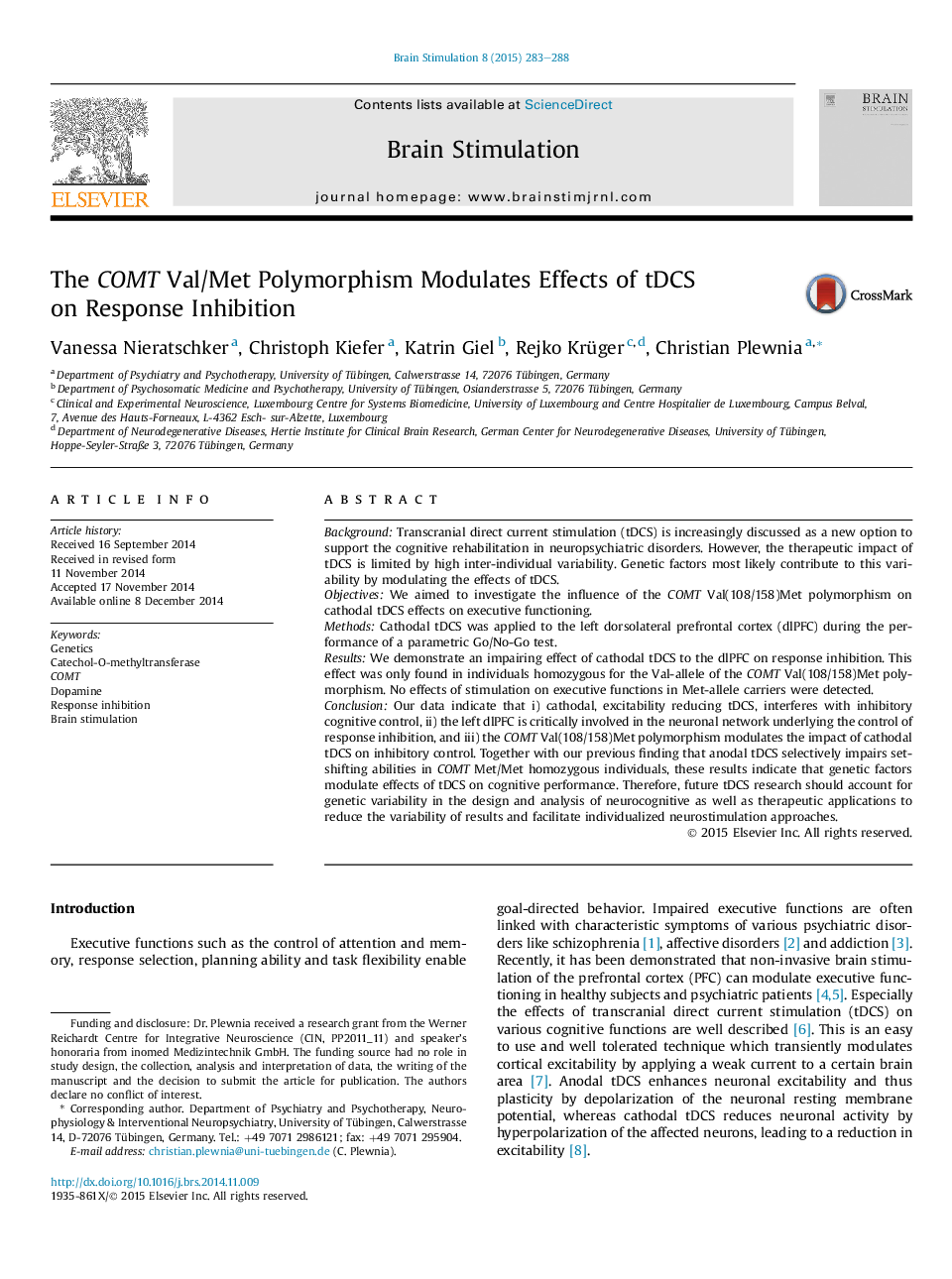| Article ID | Journal | Published Year | Pages | File Type |
|---|---|---|---|---|
| 6006047 | Brain Stimulation | 2015 | 6 Pages |
â¢Cathodal, inhibitory tDCS to the left prefrontal cortex impairs response inhibition.â¢This effect was found in COMT Val-Val homozygous but not in Met-allele carriers.â¢The COMT polymorphism predicts the influence of tDCS on response inhibition.â¢Genetic information appears effective to individualize brain stimulation effects.
BackgroundTranscranial direct current stimulation (tDCS) is increasingly discussed as a new option to support the cognitive rehabilitation in neuropsychiatric disorders. However, the therapeutic impact of tDCS is limited by high inter-individual variability. Genetic factors most likely contribute to this variability by modulating the effects of tDCS.ObjectivesWe aimed to investigate the influence of the COMT Val(108/158)Met polymorphism on cathodal tDCS effects on executive functioning.MethodsCathodal tDCS was applied to the left dorsolateral prefrontal cortex (dlPFC) during the performance of a parametric Go/No-Go test.ResultsWe demonstrate an impairing effect of cathodal tDCS to the dlPFC on response inhibition. This effect was only found in individuals homozygous for the Val-allele of the COMT Val(108/158)Met polymorphism. No effects of stimulation on executive functions in Met-allele carriers were detected.ConclusionOur data indicate that i) cathodal, excitability reducing tDCS, interferes with inhibitory cognitive control, ii) the left dlPFC is critically involved in the neuronal network underlying the control of response inhibition, and iii) the COMT Val(108/158)Met polymorphism modulates the impact of cathodal tDCS on inhibitory control. Together with our previous finding that anodal tDCS selectively impairs set-shifting abilities in COMT Met/Met homozygous individuals, these results indicate that genetic factors modulate effects of tDCS on cognitive performance. Therefore, future tDCS research should account for genetic variability in the design and analysis of neurocognitive as well as therapeutic applications to reduce the variability of results and facilitate individualized neurostimulation approaches.
